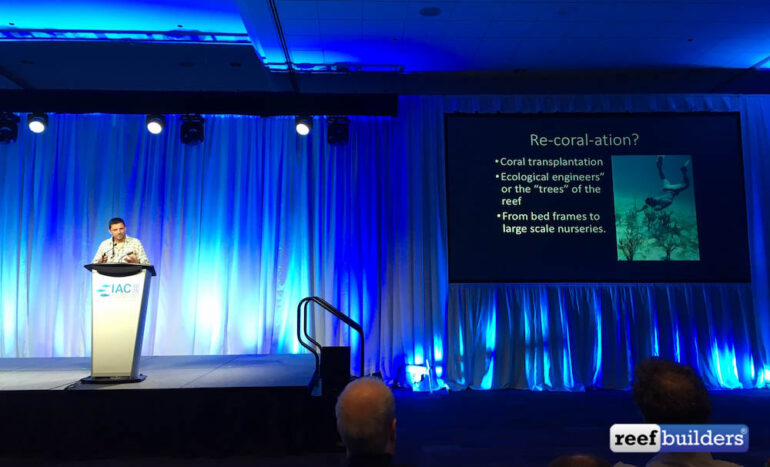International Aquarium Congress | Day 3
We’ve all heard the doom and gloom reports of dying, degraded, bleached reefs, but is the situation really that bad? Dr. James Guest gave a keynote address to Congress delegates to discuss reasons for both optimism and despair.
Unfortunately, lots of coral degradation happens in the world, and Dr. Guest presented an overview of some of the major disturbances (rising ocean temperatures, coastal development, destructive fishing, and pollution) that break down a reef’s ability to recover. Of these disturbances those that result in structural damage to the reef is by far the worst, although reefs which were healthy, to begin with can and do recover.
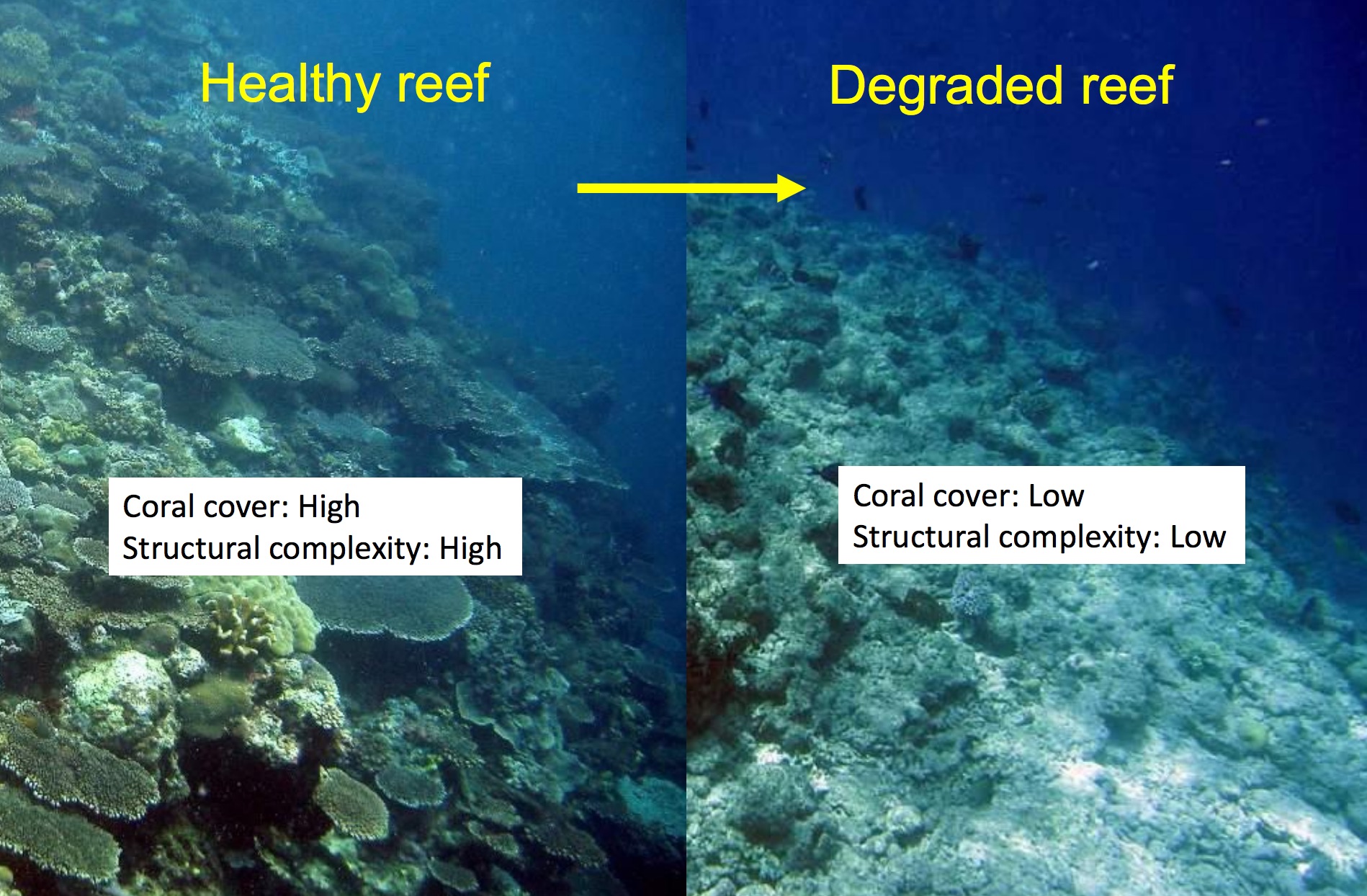
When reefs become damaged, they lose their structural complexity which results in less habitat for fish. This reduction in habitat and loss of fish (in particular large herbivorous fish) is what leads to the decline and ensuing phase shift of a healthy coral reef to fleshy macroalgae dominate habitat.
On the other hand, reefs can remain structurally intact, but overfishing can cause a decline in large herbivorous fish, and a phase shift can still take hold. Now combine these two factors (damaged reef structure and the loss of large fish) with other disturbances like bleaching event, disease outbreak, acidification or sedimentation and you have a recipe for disaster.
Herbivorous fish keep macroalgae populations in check. Herbivorous fish such as surgeonfish and parrotfish pick algae off the rocks and create suitable spaces for baby corals to settle and recolonize a disturbed reef habitat.
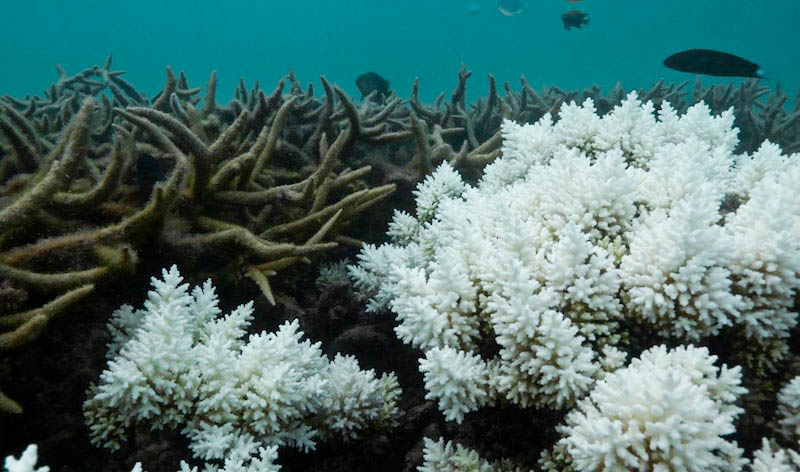
It’s complicated
Coral reef ecosystems are complicated, and there are plenty of nuances and intimate interactions which can tip the scales in either direction. Reefs can recover from periodic disturbances, and as we would expect, reefs with healthy fish population are more resilient. But start increasing the frequency and amount of disturbances and a healthy reef ecosystem can quickly slip into decline.
With or without us, life on earth will continue, and often we find that life thrives in the most unexpected places. Dr. Guest gave the example of his research on coral reefs in Singapore, an island who’s population has risen dramatically from 150 people in 1819 to 5 million plus inhabitants today.

The island has no remaining natural coastline (aside from a small national reserve) and most of the southern island where reefs occur are covered in seawalls and have undergone extreme development. Over 140,000 container ships arrive annually in Singapore, and channels are dredged to make way for their passage. The water around the island are murky, dark, dirty, and the reefs are about as disturbed as you can get.
You would expect all the corals to be gone from such a disturbed habitat, and when you swim around the shallow lagoons, you find very few large fish and macroalgae outcompeting corals. Nevertheless, once you reach the reef crest around 3-4 meters (10-13 feet) deep you have 40-50% coral cover with some of the best examples having up to 70% coral cover. Past 6 meters however corals are once again sparse due to lack of light.
Survival of the fittest
It is a paradox that such a diversity of corals would survive despite a less than ideal living condition. The reefs between 3-4m clearly haven’t shifted to macroalgae dominated cover, and persistent disturbances may offer a theory to the coral’s resilience.
Perhaps turbidity reduces macroalgae growth, or these reefs are more resilient to sedimentation cover. Maybe these reefs are resistant to bleaching because of the turbidity, and perhaps the corals which thrive have developed an adaptation to these conditions.
We know very little about the adaptive capacity of coral, yet we are aware they can survive in extreme and degraded environments. Corals have the ability to withstand thermal stress, and we see examples of this in the Persian Gulf where water temperatures can reach 36-37-38°C (100° F) during summer months.
Are there some corals which are more adapted to these threats? Have the fittest corals survived disturbances and adapted to their new life in a changing ocean? Dr. Guest is looking for these resilient corals to isolate and earmark individual genotypes for conservation and restoration on a larger scale.
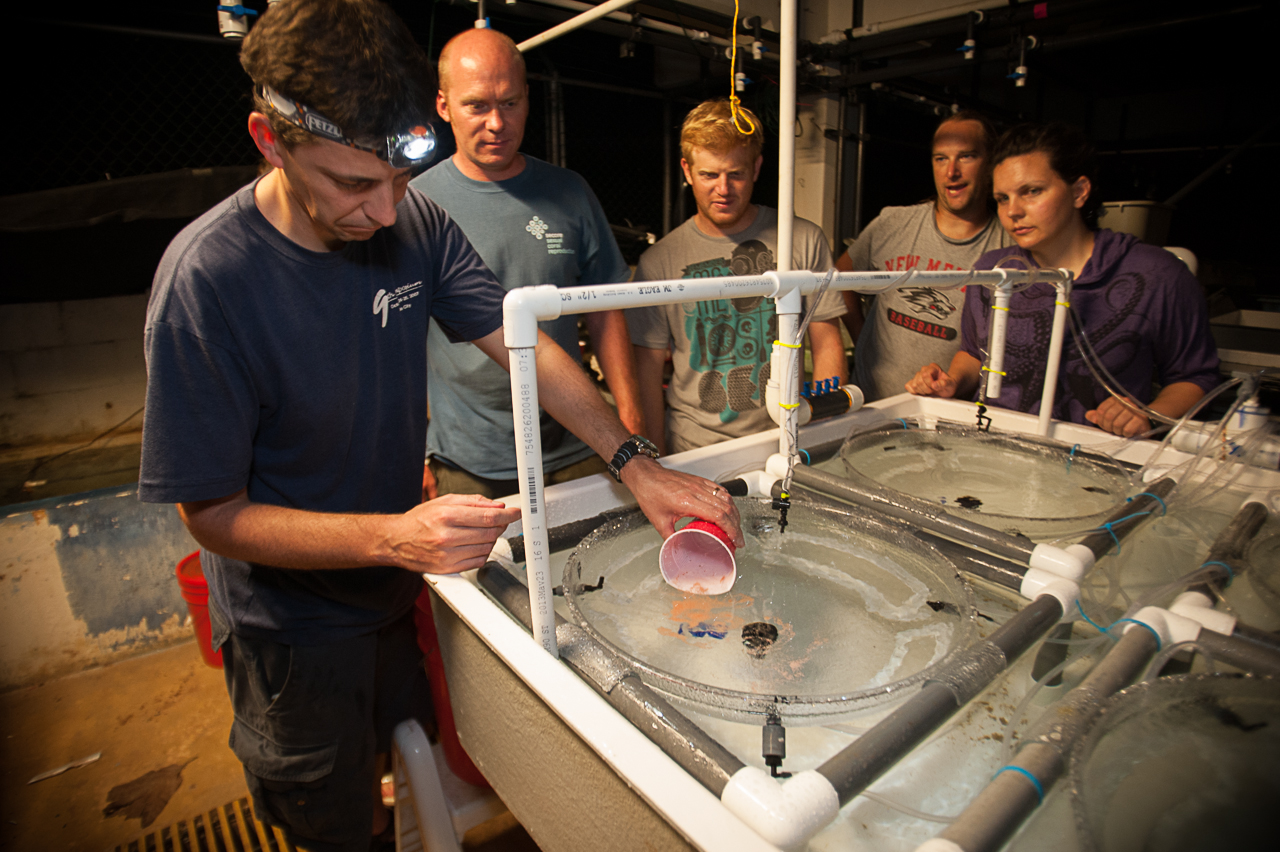
“When we see a bleaching event we see that some coral are more affected than others. Some coral are more resilient to thermal stress, and we may be able to take those corals and spawn them, said Dr. Guest.”
Although this does raise some interesting questions, does thermal tolerance make coral more resilience? Or are these corals diverting their energy into thermal tolerance and now become less effective at growth and spawning?
How scientist and aquarist can work together.
Currently, the primary method used for regrowing coral is asexual reproduction or fragging and one of the way we can counter the loss of genetic diversity from fragging is rearing and propagating coral sexually.
Dr. Guest and other scientists are testing new ways to raise corals from spawn, rearing them on various substrates which we can later be planted on the reef. “This is where biologist can learn from aquarist, said Guest.”
Once corals are settled, or before they spawn in captivity, scientists can learn from aquarist the best methods to keep these animals alive. Scientists can leave what conditions corals need to survive, including water movement, lighting, and nutrition requirements.
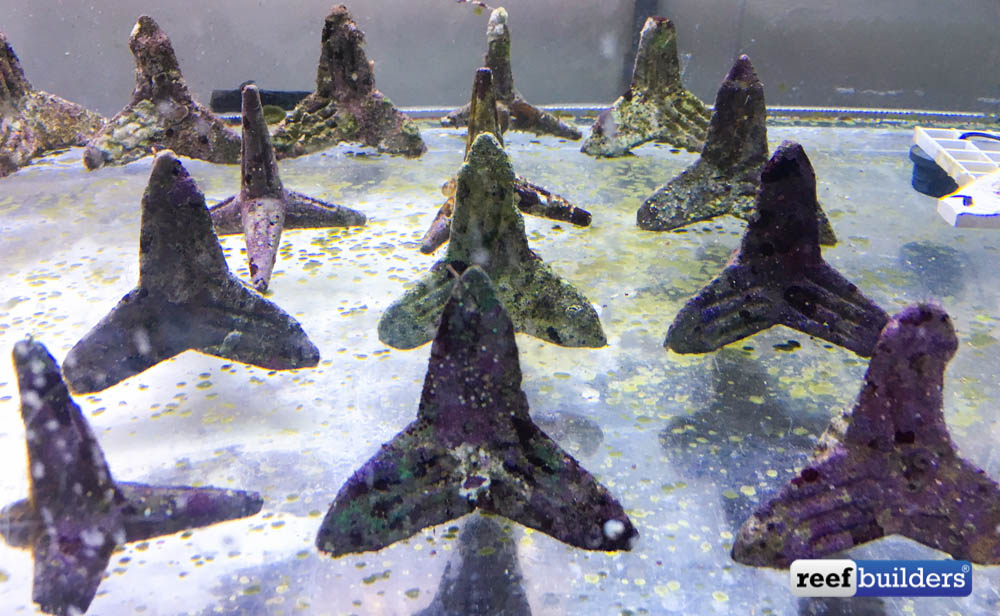
We need to continue looking at reefs during stressful disturbance events. We need to find “super corals” that are not only thermally tolerant but have different genetics and high tolerance to many disturbances.
Aquarist like Jaime Craggs are working to spawn corals in captivity and developing new theories and methods to manipulate spawning rhyming ex situ in captivity. Aquarist can help share this valuable knowledge with restoration biologist to ensure we are all working towards a common goal of safeguarding the genetic diversity of coral reefs.


